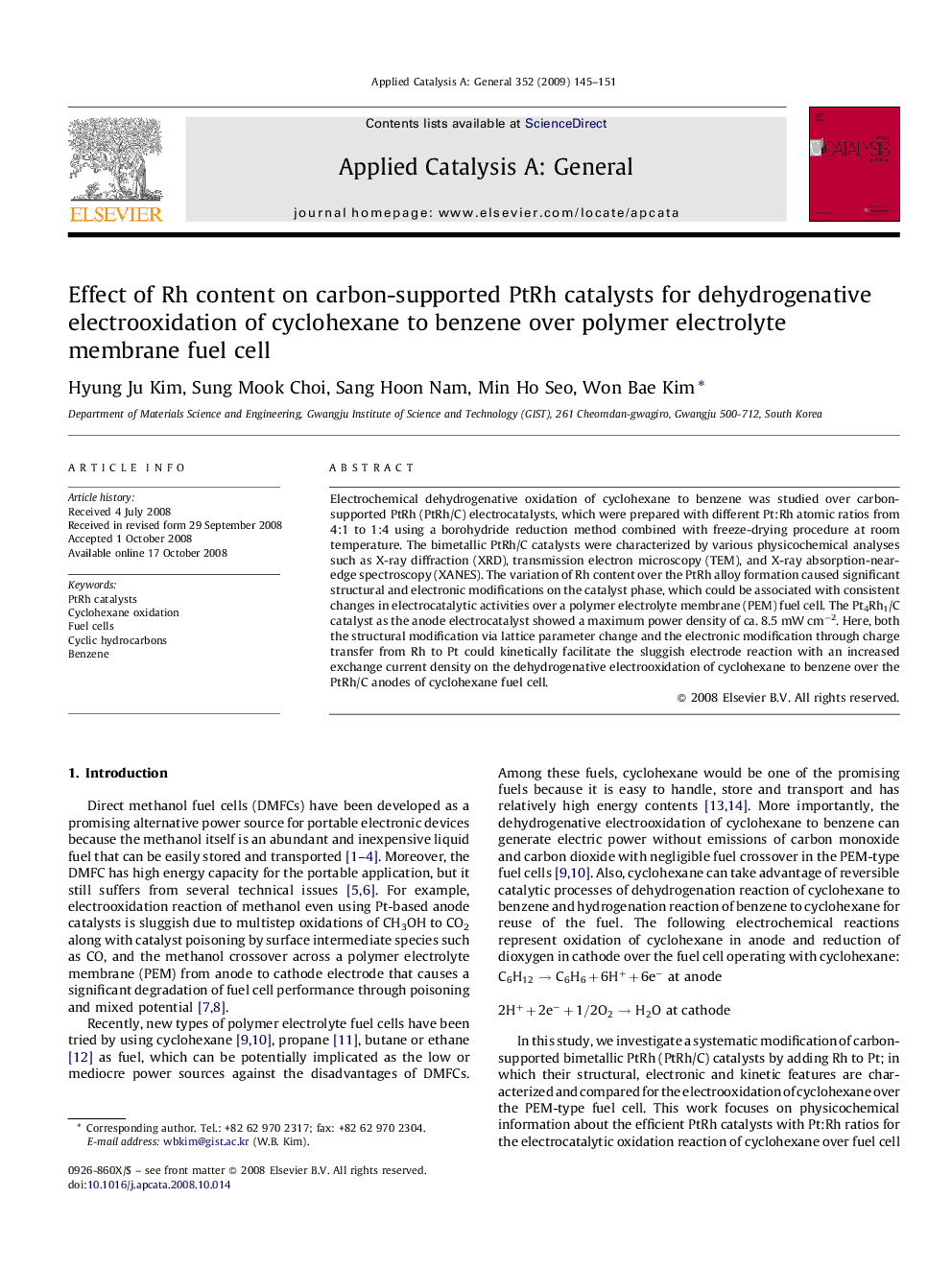| Article ID | Journal | Published Year | Pages | File Type |
|---|---|---|---|---|
| 43163 | Applied Catalysis A: General | 2009 | 7 Pages |
Electrochemical dehydrogenative oxidation of cyclohexane to benzene was studied over carbon-supported PtRh (PtRh/C) electrocatalysts, which were prepared with different Pt:Rh atomic ratios from 4:1 to 1:4 using a borohydride reduction method combined with freeze-drying procedure at room temperature. The bimetallic PtRh/C catalysts were characterized by various physicochemical analyses such as X-ray diffraction (XRD), transmission electron microscopy (TEM), and X-ray absorption-near-edge spectroscopy (XANES). The variation of Rh content over the PtRh alloy formation caused significant structural and electronic modifications on the catalyst phase, which could be associated with consistent changes in electrocatalytic activities over a polymer electrolyte membrane (PEM) fuel cell. The Pt4Rh1/C catalyst as the anode electrocatalyst showed a maximum power density of ca. 8.5 mW cm−2. Here, both the structural modification via lattice parameter change and the electronic modification through charge transfer from Rh to Pt could kinetically facilitate the sluggish electrode reaction with an increased exchange current density on the dehydrogenative electrooxidation of cyclohexane to benzene over the PtRh/C anodes of cyclohexane fuel cell.
Graphical abstractElectrochemical oxidation of cyclohexane was studied over the Pt/C and a series of PtRh/C catalysts. As a consequence of the Rh incorporation in the Pt4Rh1/C, the modified lattice parameter favors the reaction structurally and the electronic modification with filling d band states of Pt atoms promotes the reaction electronically, both leading to enhancing the sluggish electrode reaction kinetically over the electrooxidation reaction of cyclohexane.Figure optionsDownload full-size imageDownload as PowerPoint slide
